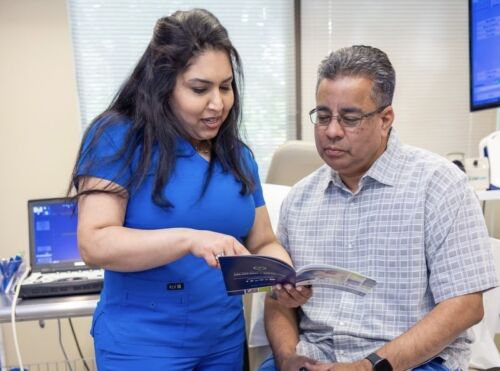Men with low testosterone levels can undergo replacement therapy, but it comes with an increased risk of blood clots and other concerns.
These days, a growing number of men are using Testosterone Replacement Therapy (TRT) to help with symptoms of low testosterone like hair loss, decreased muscle mass, fatigue, and erectile dysfunction. However, JAMA Internal Medicine recently published a study that found a correlation between TRT and an increased risk of blood clots.
The Risks of TRT
Testosterone replacement therapy can help men who have low testosterone feel more energetic, especially regarding their sexual health. While many men benefit from TRT, there are many side effects, and the long-term risks are unknown.
Those who want to undergo TRT must show symptoms and take tests that prove abnormally low testosterone levels.
TRT is available as a gel, skin or mouth patch, implant, or injection. Some experts believe oral testosterone can damage the liver, so these methods bypass the liver and put testosterone directly into the bloodstream. TRT could also potentially worsen certain health conditions such as prostate cancer, benign prostatic hypertrophy (BPH), sleep apnea, and severe congestive heart failure. However, the main concern with TRT is the possibility of developing blood clots.
Blood clots in the veins, also known as venous thromboembolism (VTE), can be extremely dangerous. Heart attack, stroke, organ damage, and even death are all potential side effects of VTE. If left untreated, VTE can lead to deep vein thrombosis (DVT) and pulmonary embolism (PE), a life-threatening condition in which a blood clot dislodges and travels to the lungs.
How Does TRT Lead to Blood Clots?
For men and women alike, adjusting hormones in natural or medical ways can increase health risks associated with venous disease and blood clots. However, no one is sure why testosterone sometimes leads to blood clots. One possibility is that testosterone interferes with the enzymes that break up blood clots, causing clots to form more regularly.
The risk of blood clots rapidly peaks within the first six months of TRT and gradually falls after nine months of treatment. The FDA had warned about TRT-related blood clot increases in men with polycythemia, which is a condition that causes the body to make too many red blood cells. These warnings now expand to men with and without polycythemia, suggesting that TRT causes blood clots regardless of pre-existing risks.
Common symptoms of blood clots include painful muscle cramps — especially at night, particularly in the calves — as well as swelling, redness, warmth, or discoloration in the affected areas. However, blood clots are also often asymptomatic. It’s essential to regularly check for blood clots at home and schedule check-ups with a healthcare professional.
Addressing Blood Clots and TRT in Arizona
While the data is still somewhat inconclusive, it’s clear that taking TRT can heighten a man’s risk of blood clots. Those interested in testosterone replacement therapy should weigh the health risks against the positives. If you’re worried about blood clots forming as a result of TRT, or if blood clots are a concern for you, Center for Vein Restoration is here to help! Schedule a consultation at one of our three Arizona local offices in Phoenix, Mesa, and Gilbert, AZ.

 About Vein Disease
About Vein Disease
 Spider Veins
Spider Veins
 Varicose Veins
Varicose Veins
 Vein Disease Treatments
Vein Disease Treatments
 Treating Spider Veins
Treating Spider Veins
 Treating Varicose Veins
Treating Varicose Veins
 About Us
About Us
 Patient Resources
Patient Resources
 Physician Resources
Physician Resources


